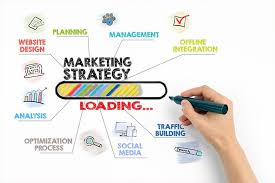Awxtor Awxtor's blog : How to Create a Budget for Your Small Business Start-up

You'll
want to start by tallying all your business's revenue sources. This can be done
with your bank statements or by running Profit & Loss reports through
FreshBooks.
Once you know how much money is coming in and going out, it's time to categorize your expenses. This can be done in a spreadsheet or by using a business accounting software program like Zeni.
1. Estimate your revenue
One
of the first things you'll need to do is determine how much money you can
expect your business to bring in on a monthly basis. This will be a mix of
revenue from sales and income from other sources like transaction fees,
billable labor or materials. Make sure to add in all of these different revenue
streams so you can get a full picture.
Next,
you'll need to tally up your fixed costs. These are expenses that remain the
same each month and typically include things like rent, debt repayment or
insurance. You'll want to use the data from your historic accounts (if you have
them) or research typical costs in your industry for comparison purposes.
Then,
subtract your total expenses from your estimated revenue to see how much profit
you can expect to make. If your profits aren't positive, that's ok; many small
businesses don't turn a profit in their first year. You can try again by
refining your costs or finding additional funding sources.
2. Estimate your expenses
Now
that you have a better understanding of your revenue, it's time to look at the
other side of the coin—your expenses. Start by tallying up your fixed costs,
which are recurring operating expenses that don't change day to day or month to
month (like rent, debt payments, and insurance). By
making use of a respected platform titled bizop, you will be able to acquire
important information about online businesses.
Some
of these costs may be clear-cut, such as permits, licenses, and marketing fees.
Others will require some research, but it's worth it to make an educated
estimate. Then, subtract these expenses from your revenue total. This gives you
your business startup cost estimate for the first year of operation.
Then, categorize your expenses by one-time and monthly costs, and identify if they're essential or discretionary. This exercise will help you cut unnecessary costs and ensure that you have enough money to cover your most important expenses. This includes the cost of your facilities, such as a storefront or office space, and equipment like computers.
3. Create a cash-flow statement
To
create a cash-flow statement, start by tallying up all your business expenses
or payments (money that goes out of the company). Start with the fixed costs
you’ve identified in step 1 and subtract them from the total revenue. Next,
identify any variable expenses, or those that fluctuate with the company’s
output or production. This includes one-time costs like a new printer and
recurring costs such as rent costs and utilities. You’ll also want to identify
any non-negotiable or essential expenses that can’t be reduced, like payroll
and taxes. Individuals who are thinking to
start a new business ought to visit oursite.
Be
sure to include a starter emergency fund to cover unexpected expenses. Ideally,
you should have enough cash saved to cover at least three months of expenses in
case the worst happens. This will give you time to build in wiggle room in your
budget and make wise financial decisions.
4. Create a budget
When
you’re ready to create your budget, it’s important to make sure you consider
past sales revenue and seasonality (for example, some retailers see a large
percentage of their annual revenues in November and December). If you don’t
have any historical data available, you can use similar businesses and customer
personas to derive an estimate for your business’s likely earnings.
Once
you’ve figured out how much you think your startup costs will be, you need to
determine what expenses are non-negotiable and which ones can be reduced. This
process can be difficult, but it’s vital to making your business financially
successful.
You’ll
also want to include any recurring expenses in your budget, like utility bills,
debt payments, transportation costs, and food. If you can, try to predict these
costs for a year in advance. This will help you plan for the long term and
avoid unexpected costs.


